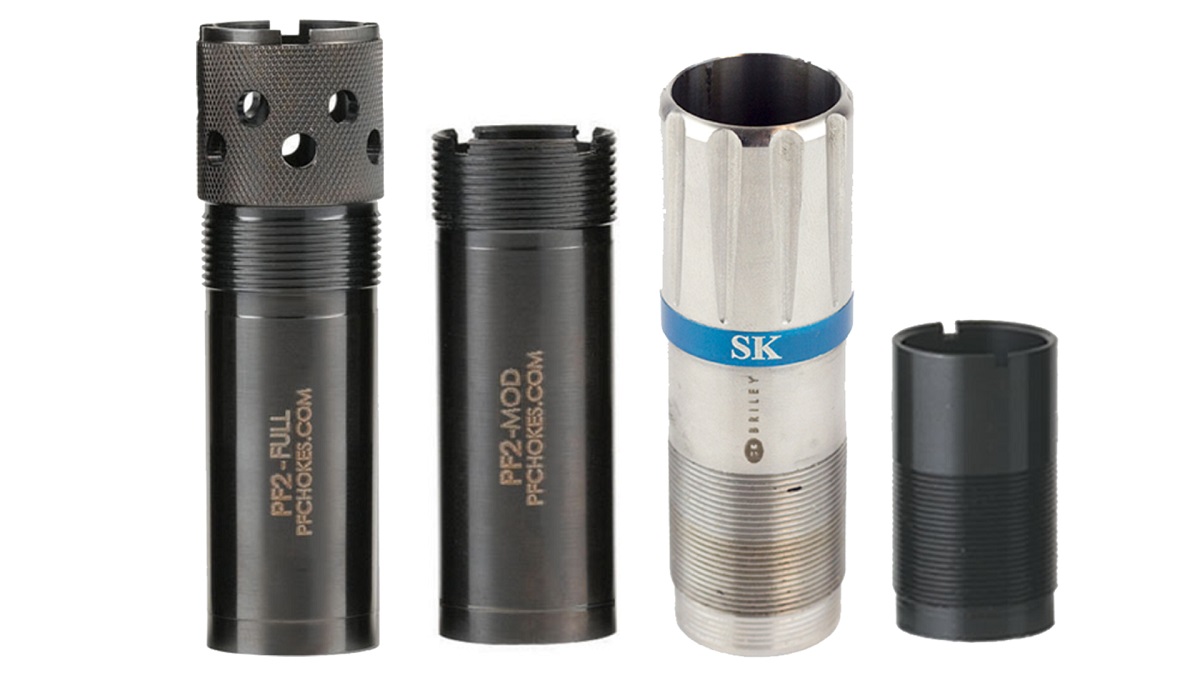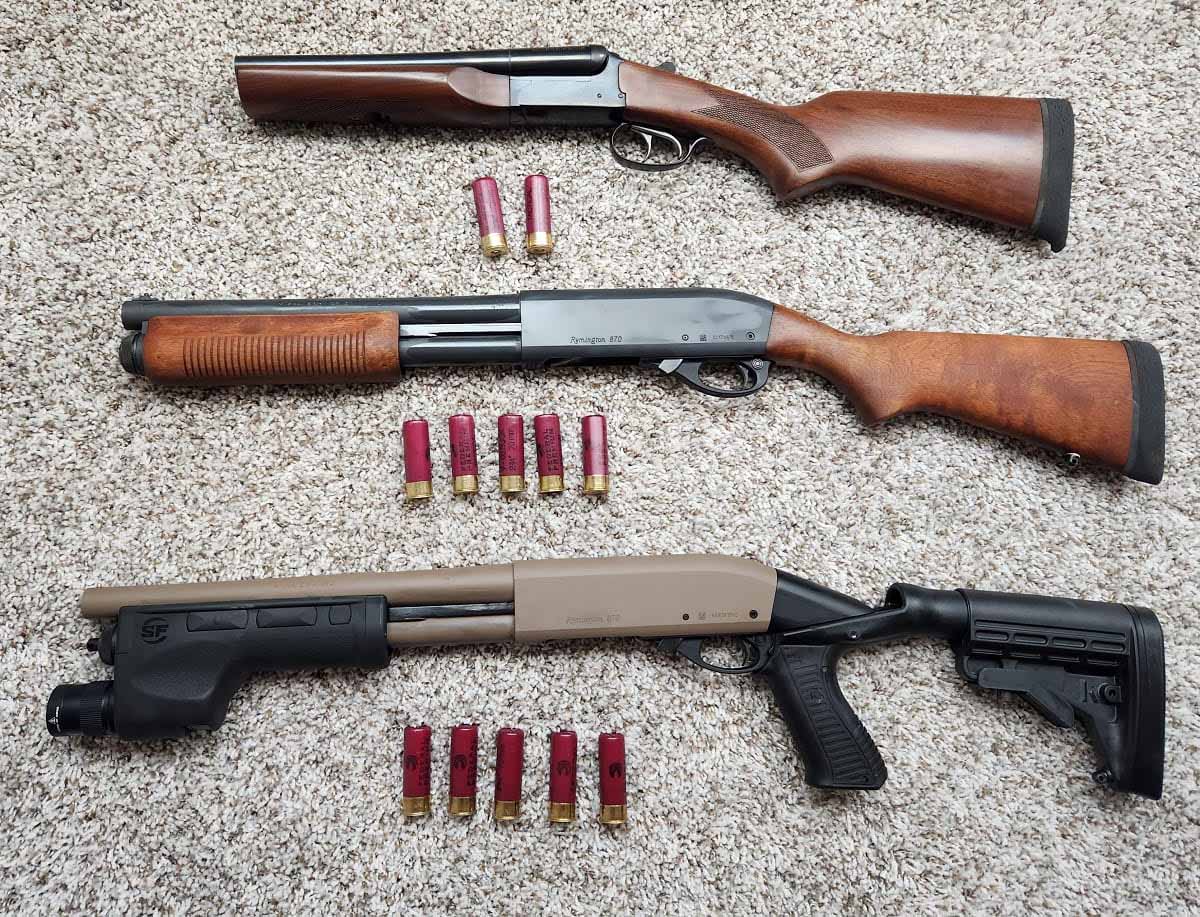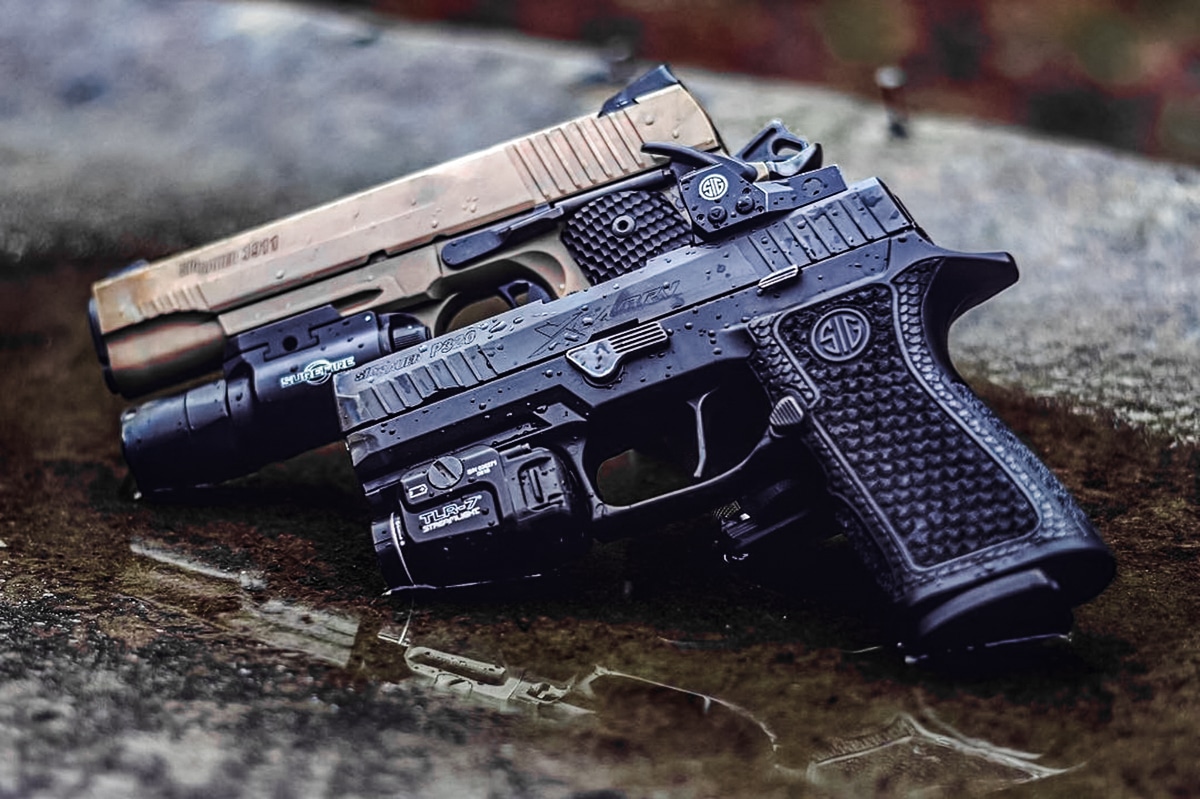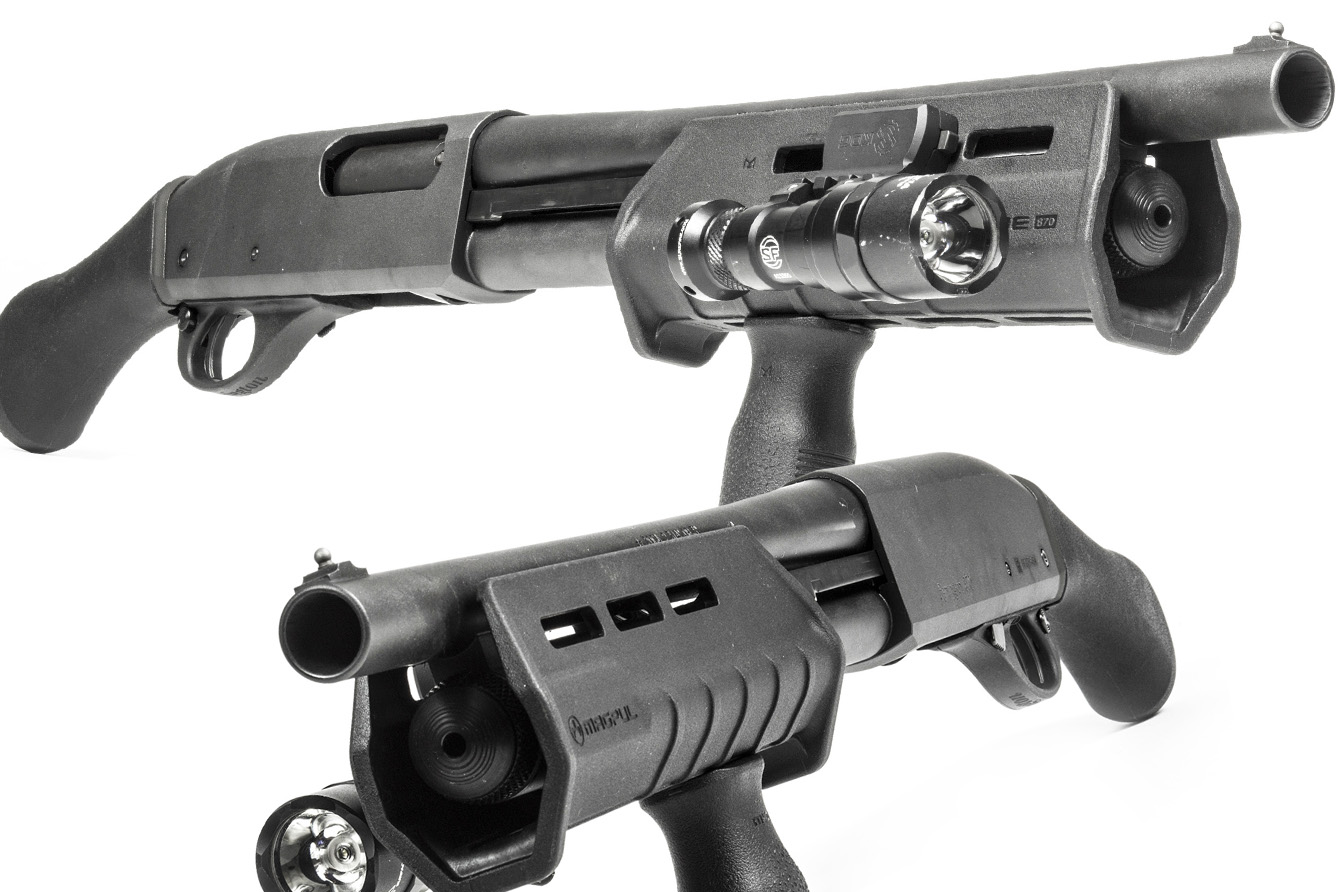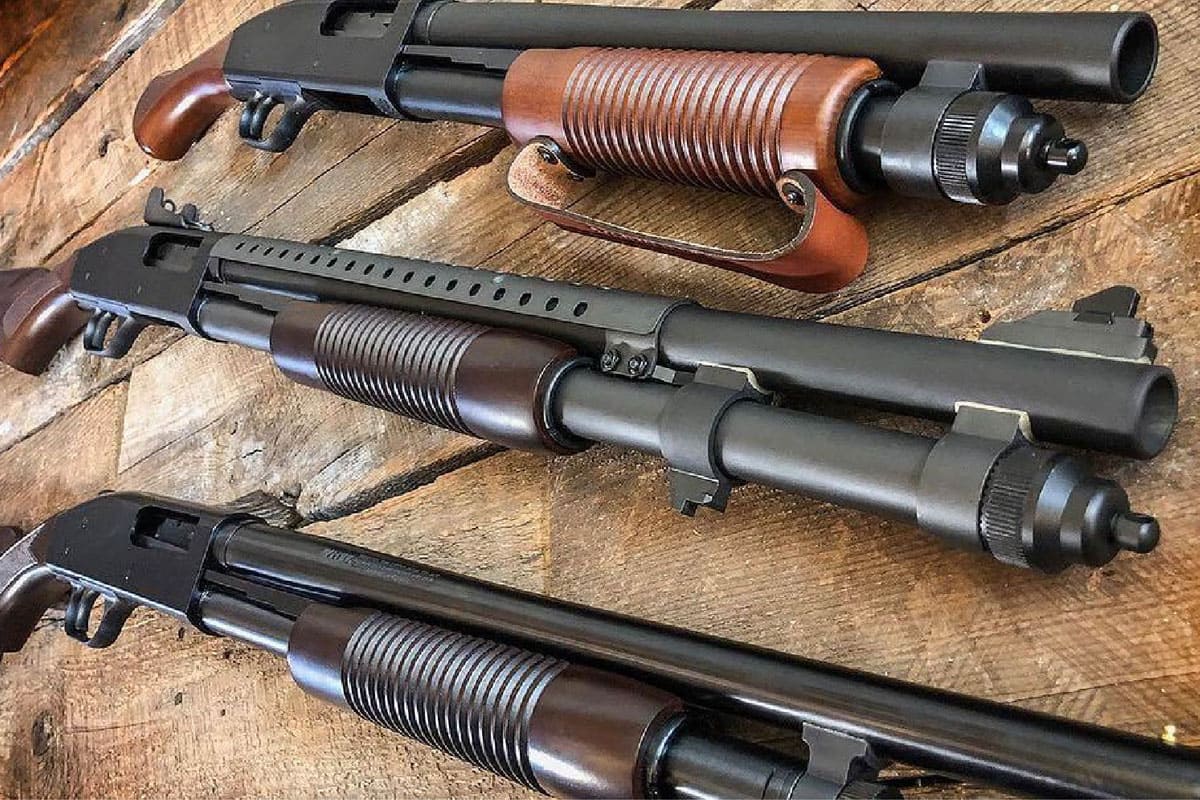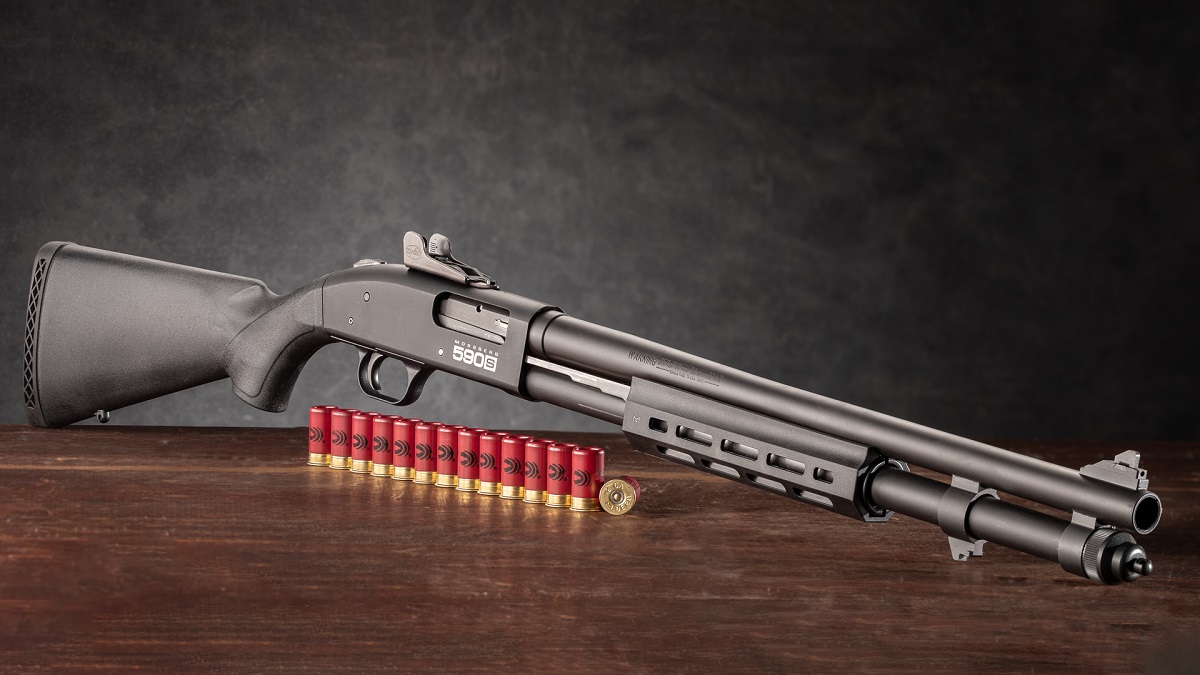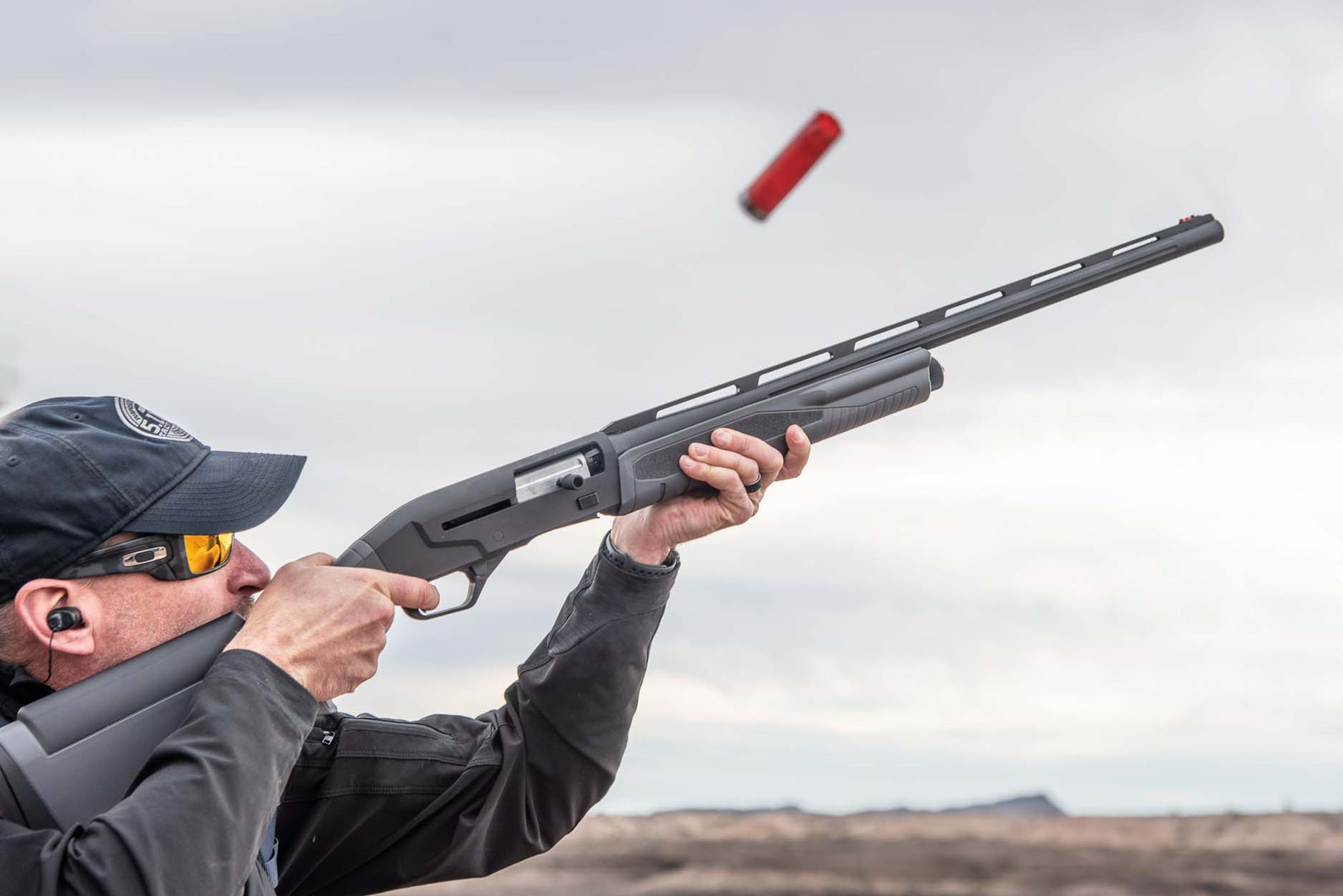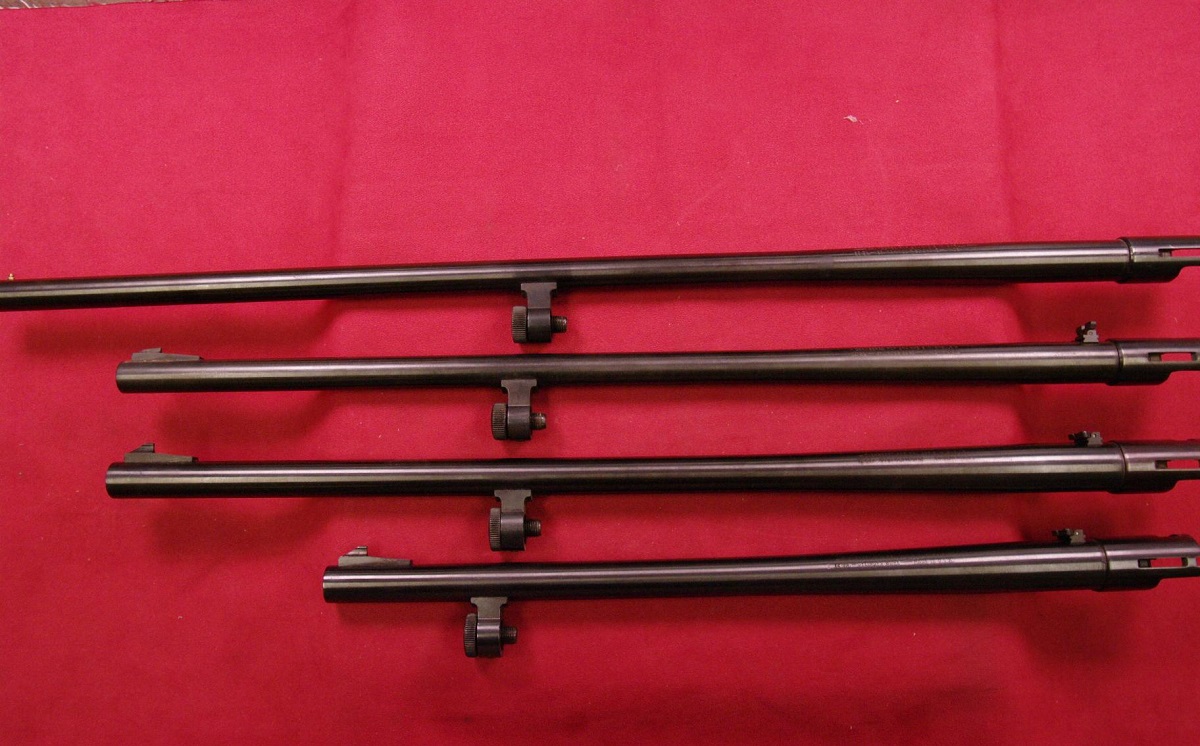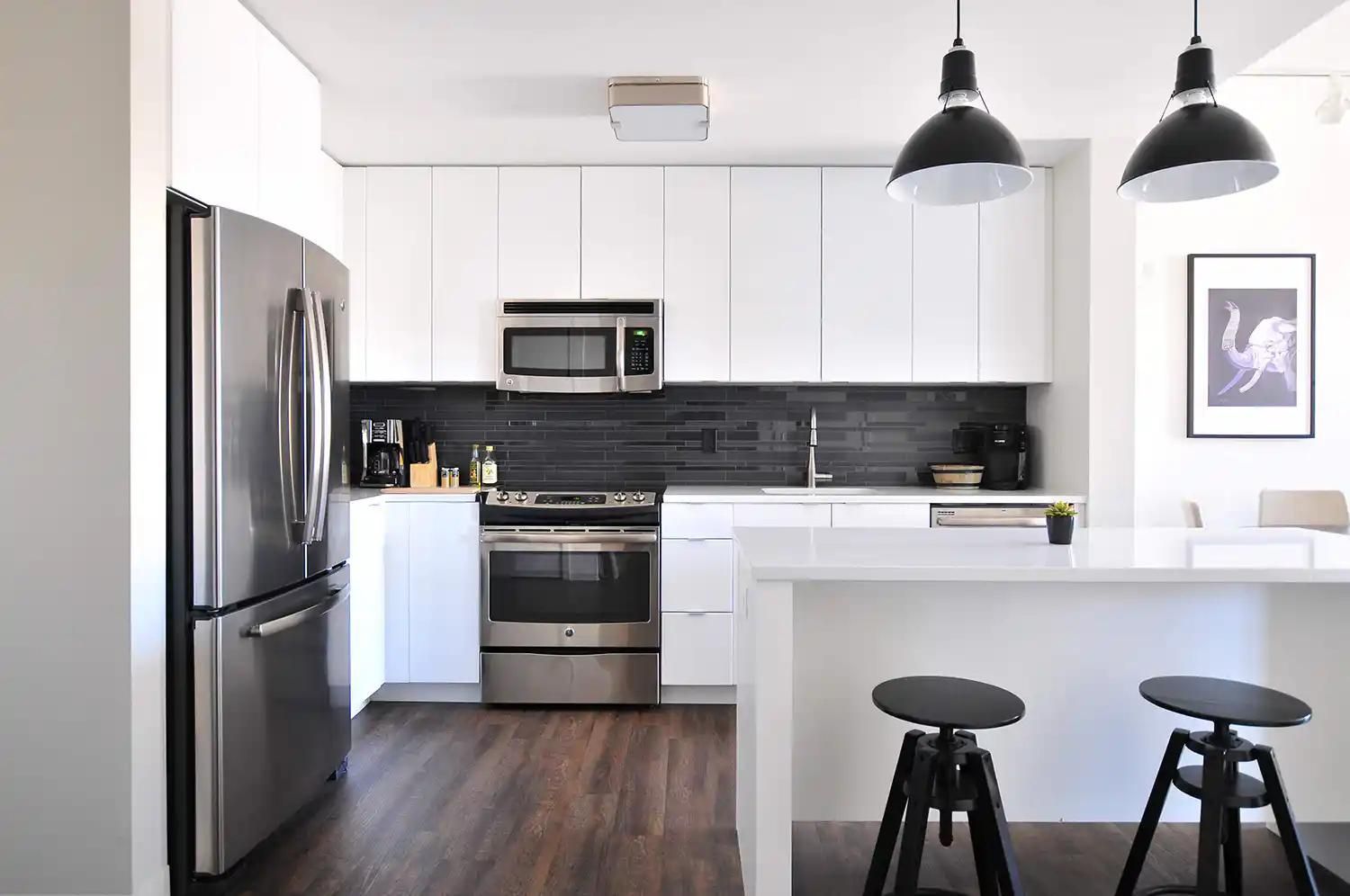Home>Home Security and Surveillance>What Is The Best Shotgun For Home Protection
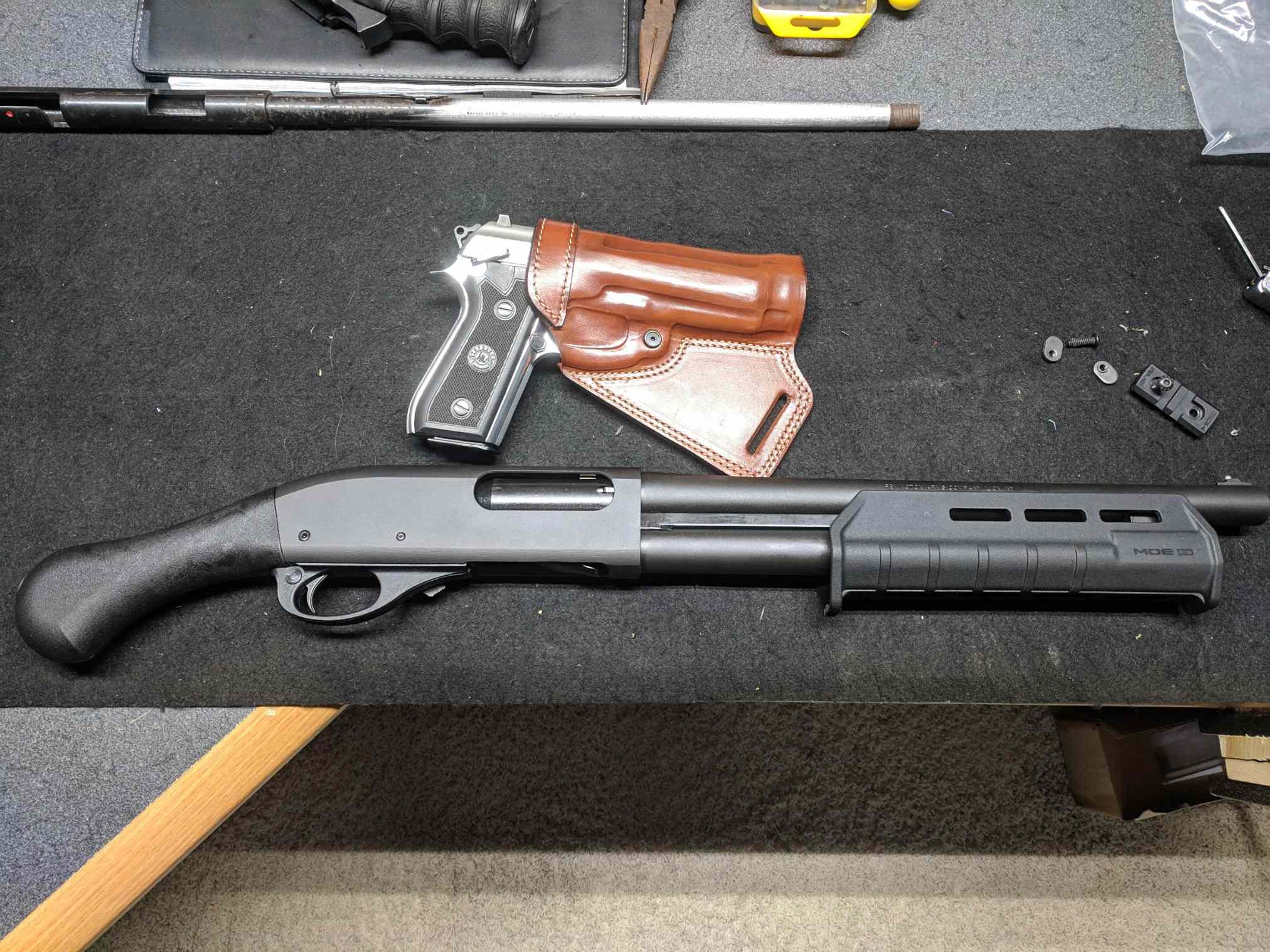

Home Security and Surveillance
What Is The Best Shotgun For Home Protection
Modified: March 6, 2024
Looking for the best shotgun for home protection? Discover top choices for home security and surveillance to keep your loved ones safe.
(Many of the links in this article redirect to a specific reviewed product. Your purchase of these products through affiliate links helps to generate commission for Storables.com, at no extra cost. Learn more)
Introduction
When it comes to protecting your home and loved ones, having a reliable and effective home security system in place is crucial. While there are many options available, one of the most powerful and widely recognized tools for home defense is a shotgun. A shotgun offers a formidable combination of power, versatility, and ease of use that can deter potential intruders and provide you with a sense of security.
However, with so many types and models of shotguns on the market, choosing the right one for home protection can be a daunting task. Factors such as action type, gauge selection, barrel length, and recoil management all play a role in determining the best shotgun for your specific needs.
In this article, we will explore the different types of shotguns and the factors you should consider when choosing a shotgun for home protection. By understanding these key factors, you will be equipped with the knowledge to make an informed decision that aligns with your specific home security needs.
Key Takeaways:
- Choose a 12-gauge pump action shotgun for reliable and versatile home defense. Its simplicity and wide ammunition compatibility make it a popular and effective choice for protecting your loved ones.
- Prioritize recoil management and consider a shorter barrel length for better maneuverability when selecting a shotgun for home protection. Accessories like flashlights and laser sights can enhance your shotgun’s effectiveness in low-light situations.
Factors to Consider when Choosing a Shotgun for Home Protection
When selecting a shotgun for home protection, there are several important factors to keep in mind. These factors will ensure that you choose a shotgun that fits your needs and maximizes your ability to defend your home effectively:
- Action type: The action type refers to how the shotgun operates. There are three main types: pump-action, semi-automatic, and break-action. Each has its advantages and disadvantages. Pump-action shotguns are reliable and easy to maintain but require manual cycling of the action after each shot. Semi-automatic shotguns offer faster follow-up shots but can be more complex to clean and maintain. Break-action shotguns are simple and easy to use, but their limited capacity can be a drawback in high-stress situations.
- Magazine capacity: The shotgun’s magazine capacity determines how many rounds it can hold. For home defense, it is recommended to choose a shotgun with a higher magazine capacity to ensure you have an adequate number of rounds to deal with potential threats. This can be particularly important if you live in an area with a higher crime rate or if you anticipate facing multiple intruders.
- Gauge selection: Shotguns come in different gauges, with 12 gauge being the most common for home defense. 12 gauge shotguns offer a good balance of power, recoil management, and ammunition availability. However, smaller gauges like 20 gauge or .410 bore can also be suitable for those who may be more sensitive to recoil or prefer a lighter firearm.
- Barrel length: The barrel length of a shotgun can affect its maneuverability and accuracy. For home defense, a shorter barrel length is generally preferred as it allows for easier maneuvering in tight spaces, such as hallways or rooms. However, it’s important to ensure that the barrel length adheres to local legal requirements to avoid any legal issues.
- Recoil management: Shotguns can produce significant recoil, especially with more powerful loads. Proper recoil management is crucial for maintaining control and accuracy during rapid fire. Features like recoil pads, stock design, and muzzle devices can help mitigate recoil and make the shotgun more comfortable to shoot.
- Accessories and modifications: Consider the availability of accessories and modifications for your chosen shotgun. Modern shotguns often have accessory rails that allow you to attach accessories like flashlights or laser sights, enhancing your ability to identify threats in low-light situations. Additionally, aftermarket modifications such as extended magazines or improved sights can further enhance the shotgun’s performance.
By carefully considering these factors, you can choose a shotgun that suits your preferences and provides you with the confidence and peace of mind you need to protect your home and loved ones.
Pump Action Shotguns
Pump action shotguns are one of the most popular and reliable choices for home defense. They are known for their ruggedness, simplicity, and ease of use. The defining feature of a pump action shotgun is the manual cycling of the action to chamber a new round.
One of the main advantages of a pump action shotgun is its reliability. The pump action mechanism is robust and less prone to malfunctions compared to other action types. This reliability is crucial in high-stress situations where every second counts. Additionally, pump action shotguns can handle a wide variety of ammunition, making them versatile and adaptable to different home defense scenarios.
Pump action shotguns also have a reputation for being easy to maintain. Cleaning and maintenance procedures are relatively straightforward, and most owners can perform routine maintenance tasks without any specialized knowledge or tools. This ease of maintenance ensures that the shotgun remains in optimal working condition, ready for use at a moment’s notice.
Another advantage of pump action shotguns is their affordability. They are typically more budget-friendly compared to semi-automatic shotguns, making them accessible to a wide range of users. This affordability allows homeowners on a tighter budget to still obtain a reliable and effective home defense tool.
However, it’s important to note that pump action shotguns require manual cycling of the action after each shot, which can slow down follow-up shots compared to semi-automatic shotguns. This factor should be taken into consideration when evaluating your specific home defense needs.
In summary, pump action shotguns offer a combination of reliability, versatility, and affordability that make them a popular choice for home defense. Their ruggedness and ease of maintenance ensure that they can reliably perform when it matters most. Whether you’re a first-time gun owner or an experienced shooter, a pump action shotgun is a reliable option to protect your home and loved ones.
Semi-automatic Shotguns
Semi-automatic shotguns are a popular choice for home defense due to their rapid-fire capability and ease of use. Unlike pump-action shotguns, semi-automatic shotguns automatically cycle the action, ejecting the spent shell and chambering a new round with each pull of the trigger.
One of the primary advantages of semi-automatic shotguns is their ability to fire multiple rounds quickly without the need to manually cycle the action. This rapid-fire capability can be invaluable in high-stress situations where you may need to engage multiple targets or follow up shots are required. The quick and automatic cycling action allows for faster target acquisition and reduced downtime between shots, providing a significant advantage in home defense scenarios.
Semi-automatic shotguns also offer reduced felt recoil compared to pump-action shotguns. The gas-operated or recoil-operated action absorbs some of the recoil energy, resulting in a more comfortable shooting experience. This recoil reduction can be especially beneficial for shooters who may have concerns about managing recoil or for smaller statured individuals who may find it challenging to handle heavier recoiling firearms.
Another advantage of semi-automatic shotguns is their ease of use. The absence of manual cycling eliminates the need to manipulate the action after each shot, allowing shooters to focus on their target without interruption. This simplicity makes semi-automatic shotguns a great choice for those with less experience in firearm operation. However, it’s essential to note that proper training and familiarity with the firearm are still crucial for safe and effective use.
One consideration to keep in mind with semi-automatic shotguns is their increased complexity compared to pump-action shotguns. The additional moving parts and gas systems can make cleaning and maintenance slightly more involved. However, with proper care and regular maintenance, these shotguns can provide reliable performance for years to come.
Overall, semi-automatic shotguns offer rapid-fire capability, reduced recoil, and ease of use, making them an appealing option for home defense. Their ability to quickly engage multiple threats and their comfortable shooting experience make them a popular choice among homeowners who prioritize firepower and ease of operation.
Break Action Shotguns
Break action shotguns, also known as single-shot shotguns, offer a straightforward and reliable option for home defense. As the name suggests, these shotguns feature a simple break-action design where the barrel and receiver hinge open to load a single round.
One of the main advantages of break action shotguns is their simplicity. With no moving parts or complex mechanisms, break action shotguns are incredibly reliable and easy to operate. The lack of a magazine or action means there is less chance of a malfunction, making these shotguns an excellent choice for users who prioritize reliability above all else.
Break action shotguns also have the advantage of being lightweight and maneuverable. Their compact design allows for easy maneuvering in tight spaces, making them ideal for home defense scenarios where quick navigation through hallways or rooms may be necessary.
Another benefit of break action shotguns is their affordability. With fewer components and a simpler design, break action shotguns are often more cost-effective compared to pump-action or semi-automatic shotguns. This affordability makes them a practical option for homeowners on a budget who still desire a reliable means of home protection.
However, one of the main drawbacks of break action shotguns is their limited capacity. With only a single round in the chamber, break action shotguns require reloading after each shot, which can be a significant disadvantage in high-stress situations where multiple rounds may be necessary. This limitation makes it crucial to prioritize shot placement and accuracy when using a break action shotgun for home defense.
Additionally, the lack of a detachable magazine means that spare ammunition must be carried separately. This can be a minor inconvenience when compared to the readily available ammunition in a magazine-fed shotgun.
In summary, break action shotguns provide a simple and reliable option for home defense. Their straightforward design and affordability make them accessible to a wide range of users. While their limited capacity can be a drawback, their reliability and ease of use make break action shotguns an appealing choice for homeowners who prioritize simplicity and reliability in their home defense firearm.
Magazine Capacity
When choosing a shotgun for home protection, considering the magazine capacity is an important factor. The magazine capacity determines the number of rounds that can be loaded into the shotgun before needing to reload. Adequate magazine capacity is crucial in home defense scenarios, as it ensures you have enough ammunition to address potential threats.
Shotguns come in a variety of magazine capacities, ranging from single-shot break action shotguns to those with extended magazines that can hold multiple rounds. The most common magazine capacities for shotguns used in home defense are typically 4+1 or 5+1, meaning they can hold four or five rounds in the magazine tube plus one additional round in the chamber.
Having a higher magazine capacity can provide several advantages. First, it allows for sustained fire in case of multiple intruders or in situations where multiple shots are needed to neutralize a threat. This can be particularly important if law enforcement response in your area is relatively slow or if you live in a remote location where help may not arrive quickly.
Furthermore, a higher magazine capacity can also provide a psychological advantage. Knowing that you have more rounds readily available can instill a greater sense of confidence and security. The presence of a shotgun with a visible extended magazine can also serve as a deterrent to potential intruders.
It’s important to note that while higher magazine capacities provide advantages, they also come with considerations. Shotguns with higher capacity magazines may be slightly longer and heavier, which can affect maneuverability, particularly in tight spaces such as hallways or stairwells. It’s essential to strike a balance between magazine capacity and firearm size to ensure that the shotgun is comfortable and practical for your specific home defense needs.
Additionally, local regulations may dictate a maximum magazine capacity for shotguns used for home defense. It’s crucial to familiarize yourself with the laws and restrictions in your area to ensure compliance and avoid any legal issues.
In summary, when selecting a shotgun for home protection, consider the magazine capacity that suits your needs. A higher magazine capacity allows for sustained fire and can provide a psychological advantage, but it’s important to balance capacity with firearm size and local regulations. By selecting a shotgun with an appropriate magazine capacity, you can ensure that you have the necessary firepower to protect your home and loved ones.
Consider a 12-gauge pump-action shotgun with a shorter barrel for home protection. It offers reliable stopping power and ease of use in close quarters.
Gauge Selection
When choosing a shotgun for home protection, one of the key considerations is the gauge of the firearm. The gauge refers to the diameter of the shotgun’s bore, and it plays a significant role in the shotgun’s performance and effectiveness.
The most common gauges for shotguns used in home defense are 12 gauge, 20 gauge, and .410 bore. Each gauge has its own characteristics and considerations that should be taken into account when making a selection.
12 gauge shotguns are the most popular and widely available for home defense. They offer a good balance of power, recoil management, and ammunition availability. 12 gauge shotguns have a larger bore diameter, allowing for a greater payload of shot or slug. The availability of various ammunition types, including buckshot and slugs, makes the 12 gauge a versatile choice for different home defense scenarios. However, it’s important to note that 12 gauge shotguns can produce more recoil compared to smaller gauge options, necessitating proper recoil management techniques.
20 gauge shotguns are a suitable alternative for those who may be more sensitive to recoil or prefer a lighter firearm. With a smaller bore diameter, 20 gauge shotguns deliver less recoil, making them more manageable for shooters, especially those of smaller stature or less experienced with firearms. Although the overall payload of shot or slug is smaller than that of a 12 gauge, 20 gauge shotguns can still provide effective home defense capabilities. Additionally, 20 gauge shotguns often have slimmer profiles, which can enhance maneuverability in tight spaces.
The .410 bore, also known as the “410 gauge,” is the smallest and least powerful option commonly used for home defense. It is important to note that due to its smaller payload of shot or slug, the .410 bore may have limited stopping power compared to the larger gauges. While the lower recoil of the .410 bore can be appealing, its effectiveness may be limited in certain home defense scenarios. However, the .410 bore has gained popularity for its ease of use and suitability for smaller individuals or those seeking a lightweight and compact option.
Ultimately, the gauge selection for a home defense shotgun should consider factors such as the shooter’s comfort with recoil, the size and layout of the home, and ammunition availability. It’s a good idea to test different gauges at a shooting range to determine the gauge that offers the right balance of power and manageability for your specific needs.
In summary, the choice of gauge for a home defense shotgun is a personal decision based on factors such as recoil tolerance, firearm maneuverability, and suitability for the individual shooter. Whether you opt for the power of a 12 gauge, the lighter recoil of a 20 gauge, or the compactness of a .410 bore, selecting the appropriate gauge will ensure that your home defense shotgun is effective and comfortable to use.
Barrel Length
When selecting a shotgun for home protection, the barrel length is an important consideration that can impact both performance and maneuverability. The barrel length refers to the length of the shotgun’s barrel, typically measured from the muzzle to the end of the receiver.
For home defense purposes, a shorter barrel length is generally preferred. A shorter barrel offers several advantages. First and foremost, it provides better maneuverability in confined spaces such as hallways or rooms. Being able to navigate tight corners and move quickly within your home is essential in high-stress situations. A shorter barrel length allows you to swing and aim the shotgun more easily, reducing the risk of getting the barrel caught on furniture or other obstacles.
Furthermore, a shorter barrel can be advantageous when it comes to target acquisition and pointing the shotgun. With less barrel length to align with the target, it can be quicker and easier to acquire a proper sight picture. This can be critical in home defense scenarios where split-second decisions and accurate shots are paramount.
However, it’s important to consider that there are legal restrictions on barrel length in some jurisdictions. It is crucial to familiarize yourself with the laws in your area regarding minimum barrel length to ensure compliance and avoid any legal issues.
On the flip side, it’s also essential to find a balance between barrel length and the shotgun’s overall length. While a shorter barrel enhances maneuverability, it can contribute to increased noise and muzzle blast. Additionally, a shorter barrel may reduce the effective range of the projectiles, particularly with certain ammunition types such as slugs.
In summary, when choosing a shotgun for home protection, consider a shorter barrel length for improved maneuverability and target acquisition. However, it’s important to be aware of any legal restrictions regarding barrel length in your jurisdiction. Additionally, finding a balance between barrel length and overall shotgun length is crucial to ensure effectiveness and manageability for your specific home defense needs.
Recoil Management
Recoil management is a crucial consideration when selecting a shotgun for home protection. Recoil, the backward thrust generated when a shotgun is fired, can vary depending on factors such as the gauge of the shotgun, the type of ammunition used, and the shotgun’s design. Proper recoil management is essential to maintain control and accuracy during rapid-fire situations.
Several factors contribute to effective recoil management. One key factor is the design and construction of the shotgun’s stock. The stock plays a vital role in absorbing and dissipating recoil energy. Some shotguns come equipped with recoil pads built into the stock, which help reduce felt recoil by absorbing and spreading out the energy over a larger surface area. These recoil pads can significantly improve the shooting experience and make the shotgun more comfortable to shoot, especially for those who may be more sensitive to recoil.
Another aspect to consider is the material of the stock. Synthetic stocks, often made of materials like polymer or fiberglass, can help reduce the felt recoil as they tend to absorb some of the energy. Wood stocks, on the other hand, may transmit more of the recoil, although the perceived difference can vary depending on factors such as the thickness and type of wood used.
Accessories such as recoil pads and adjustable stock systems can provide additional recoil management capabilities. Recoil reducers or dampeners installed within the stock can further absorb and minimize recoil, reducing the muzzle rise and allowing for faster follow-up shots. Some shotguns also offer adjustable stocks, allowing you to customize the length of pull and cheek weld to enhance control and comfort when firing.
In addition to stock design and accessories, proper shooting technique and grip play a significant role in managing recoil. Maintaining a firm and consistent grip on the shotgun, with the stock firmly against the shoulder, helps distribute recoil forces and aids in maintaining control. Learning and practicing proper shooting stance and grip techniques can improve recoil management and overall shooting performance.
It’s important to note that while recoil management can make shooting more comfortable, it should not be the sole determining factor in selecting a shotgun for home defense. It is crucial to strike a balance between recoil management and other important considerations such as reliability, maneuverability, and firepower.
In summary, recoil management is an essential aspect to consider when choosing a shotgun for home protection. Factors such as stock design, recoil pads, adjustable stocks, and shooting technique all contribute to effective recoil management. By selecting a shotgun with proper recoil management features and practicing proper shooting techniques, you can enhance control, accuracy, and comfort during high-stress home defense situations.
Read more: What Is The Best Home Defense Shotgun
Accessories and Modifications for Home Defense Shotguns
When it comes to home defense shotguns, there is a wide range of accessories and modifications available that can enhance their effectiveness and tailor them to your specific needs. These accessories and modifications can improve functionality, increase accuracy, and provide better situational awareness during home defense scenarios.
One of the most common accessories for home defense shotguns is a mounted flashlight. A flashlight mounted either on the shotgun’s magazine tube or on a dedicated accessory rail can provide essential illumination in low-light situations. This allows you to identify potential threats more easily and make accurate decisions under stress. Ensure that the flashlight is reliable, easy to operate, and provides sufficient brightness and beam focus for your specific needs.
Another popular accessory for home defense shotguns is a laser sight. A laser sight projects a highly visible beam onto the target, aiding in target acquisition and improving shooting accuracy, especially in high-stress situations. The laser sight acts as an additional aiming reference and can enhance shot placement, particularly in low-light or close-quarters scenarios.
Extended magazines are another modification commonly considered for home defense shotguns. These magazines increase the shotgun’s ammunition capacity, allowing for more rounds without the need for frequent reloading. Extended magazines can be particularly useful in situations where multiple threats are present or when law enforcement may be delayed in responding to your location. However, it is essential to ensure that any modifications comply with local laws and regulations.
Improved sights can also be beneficial for home defense shotguns. Upgrading to high-visibility sights or installing night sights can enhance the shotgun’s accuracy and target acquisition capabilities, particularly in low-light environments. This allows for quicker target identification and better shot placement, improving your ability to neutralize threats effectively.
Other accessories to consider include side shell carriers or stock-mounted shell holders. These allow for quick access to extra ammunition in case of an extended engagement or the need to reload quickly. Sling attachments can also be useful, providing a convenient and secure way to carry the shotgun while keeping your hands free for other tasks or maintaining a defensive posture.
It is important to note that while accessories and modifications can enhance the performance of your home defense shotgun, it is essential to choose reliable, high-quality products and ensure they are properly installed and maintained. Regularly inspect and test any accessories or modifications to ensure they function as intended and do not compromise the shotgun’s reliability.
In summary, accessories and modifications can enhance the effectiveness of your home defense shotgun. Consider mounting a flashlight or laser sight to improve target identification and shooting accuracy. Extended magazines, improved sights, and additional shell carriers can provide increased ammunition capacity and quick access to reloads. By selecting and installing accessories judiciously, you can optimize your shotgun’s performance for home defense.
Conclusion
Choosing the right shotgun for home protection is a crucial decision that can significantly impact your ability to defend your home and loved ones. By considering various factors such as action type, magazine capacity, gauge selection, barrel length, recoil management, and accessories, you can select a shotgun that aligns with your specific home security needs.
Pump action shotguns offer reliability, simplicity, and versatility, making them a popular choice for home defense. They are easy to maintain and handle a wide variety of ammunition. Semi-automatic shotguns provide rapid-fire capability and reduced recoil, ideal for engaging multiple threats quickly. Break action shotguns offer simplicity and reliability, often at a more affordable price point, although they have limited capacity.
When it comes to gauge selection, 12 gauge shotguns are the most common choice for home defense due to their power and ammunition availability. However, 20 gauge shotguns offer reduced recoil and improved maneuverability, while .410 bore shotguns provide a lightweight and compact option.
Barrel length is an important consideration for maneuverability and target acquisition. A shorter barrel length is generally preferred for home defense, as it allows for easier navigation through tight spaces while maintaining quick and accurate target engagement.
Effective recoil management is essential to maintain control and accuracy during rapid-fire situations. Features such as recoil pads, stock design, and accessories like recoil reducers can help mitigate recoil and make shooting more comfortable and controllable.
Lastly, accessories and modifications can enhance the functionality and effectiveness of your home defense shotgun. Mounted flashlights, laser sights, extended magazines, improved sights, and additional shell carriers can all play a role in improving target acquisition, ammunition capacity, and overall situational awareness during a home defense scenario.
In conclusion, selecting the best shotgun for home protection requires careful consideration of various factors and aligning them with your specific needs and preferences. By understanding the different types of shotguns available and evaluating the factors outlined in this article, you can choose a shotgun that provides you with the confidence, security, and peace of mind you need to protect your home and loved ones effectively.
Frequently Asked Questions about What Is The Best Shotgun For Home Protection
Was this page helpful?
At Storables.com, we guarantee accurate and reliable information. Our content, validated by Expert Board Contributors, is crafted following stringent Editorial Policies. We're committed to providing you with well-researched, expert-backed insights for all your informational needs.
